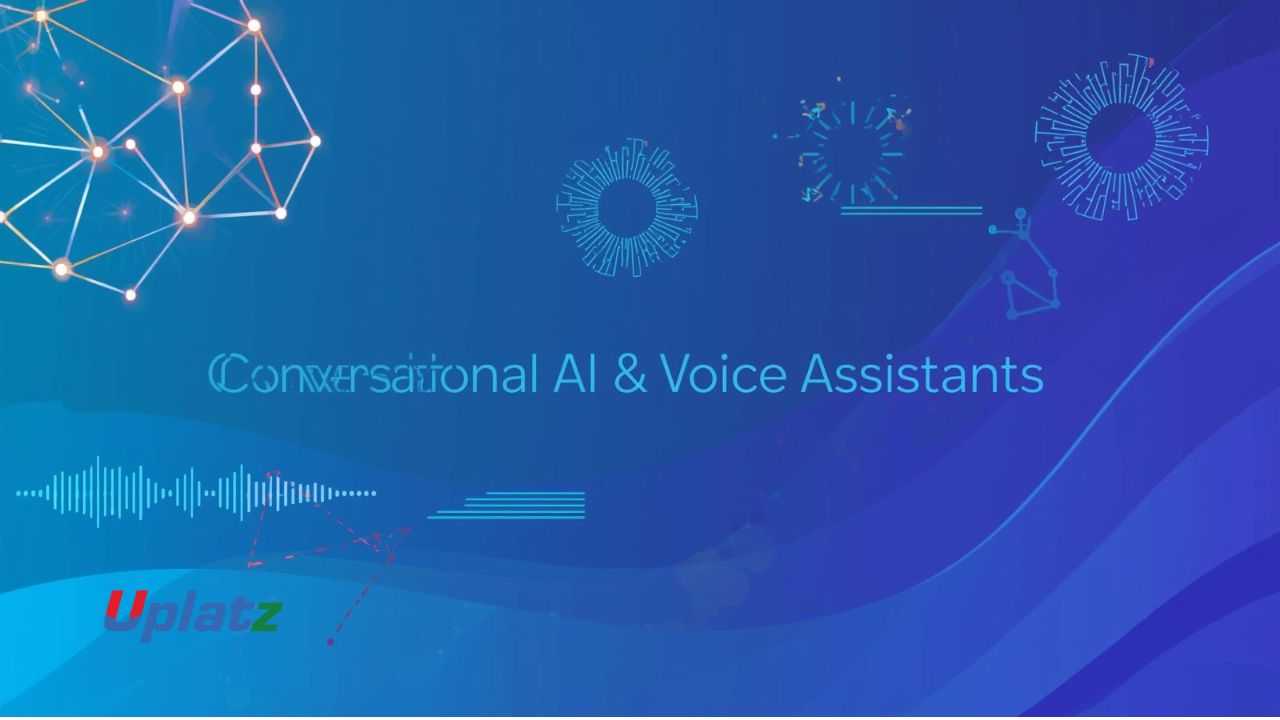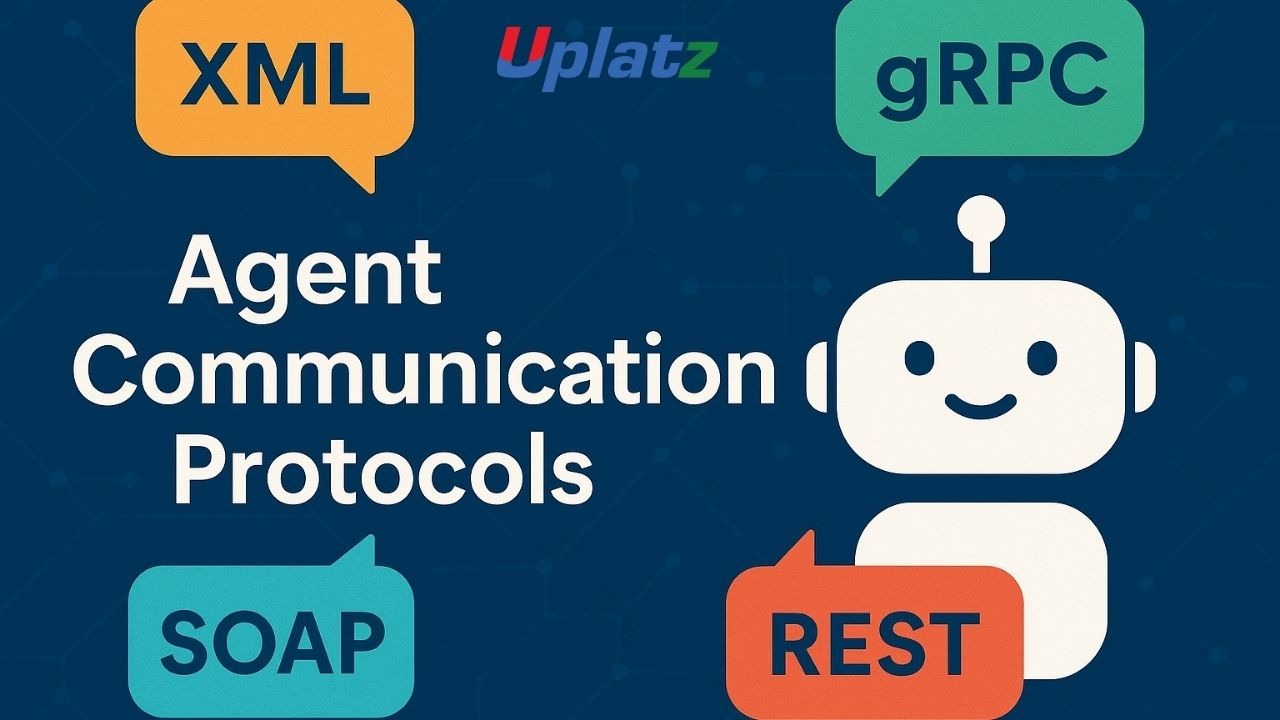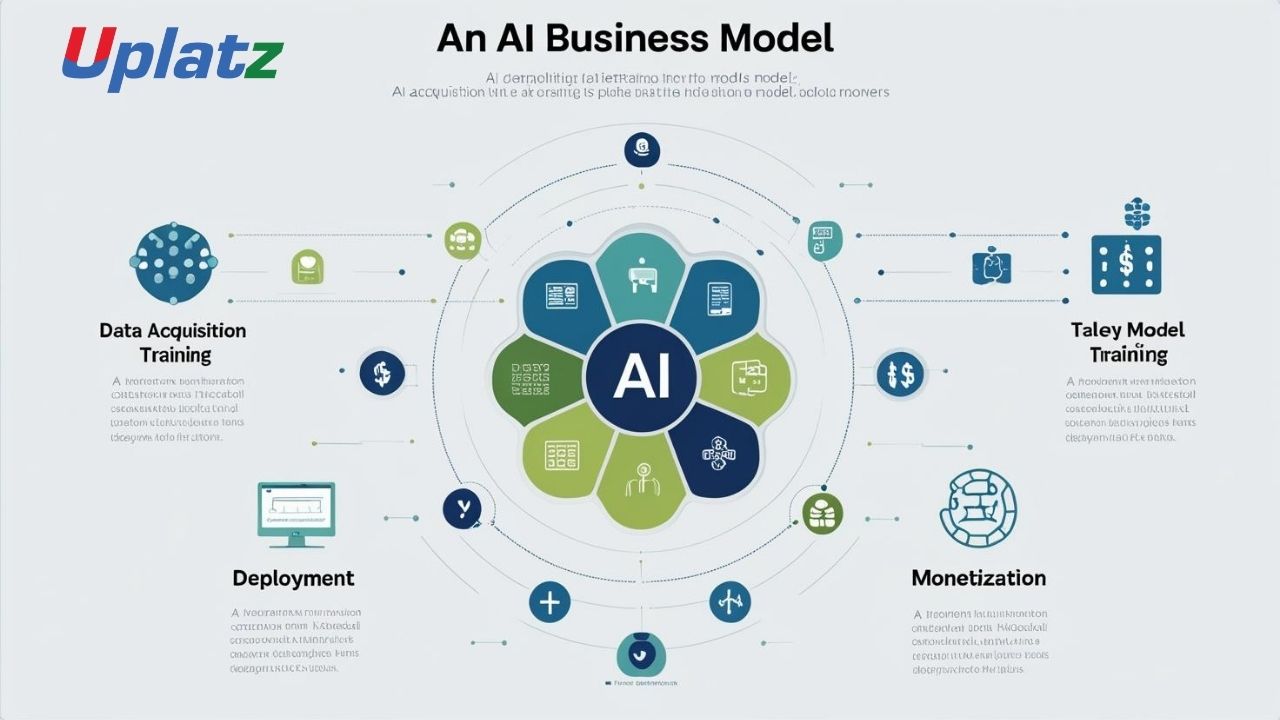Conversational AI & Voice Assistants
Design, build, and deploy intelligent chatbots and voice-enabled assistants for real-world applications. Price Match Guarantee
Full Lifetime Access
Access on any Device
Technical Support
Secure Checkout
Course Completion Certificate
Price Match Guarantee
Full Lifetime Access
Access on any Device
Technical Support
Secure Checkout
Course Completion Certificate
 93% Started a new career
BUY THIS COURSE (
93% Started a new career
BUY THIS COURSE (GBP 12 GBP 29 )-
 81% Got a pay increase and promotion
81% Got a pay increase and promotion
Students also bought -
-

- Agent Communication Protocols (ACP)
- 10 Hours
- GBP 12
- 10 Learners
-

- Agentic AI for Cybersecurity
- 10 Hours
- GBP 12
- 10 Learners
-

- AI Business Model Design
- 10 Hours
- GBP 12
- 10 Learners

Conversational AI & Voice Assistants – Building Natural and Intelligent Dialog Systems
Conversational AI & Voice Assistants is an advanced course that teaches how to design, develop, and deploy intelligent conversational systems that understand and respond to human language. The course combines principles of Natural Language Processing (NLP), speech recognition, and dialog management to create interactive AI experiences for both text and voice channels.
From virtual assistants like Siri, Alexa, and Google Assistant to enterprise-grade chatbots and voice-based customer support, conversational AI is reshaping how humans interact with technology. In this course, learners will explore frameworks such as Dialogflow, Rasa, IBM Watson Assistant, and Amazon Lex, along with speech-to-text and text-to-speech integration using APIs.
Through practical projects, you’ll gain end-to-end experience—building, training, and deploying conversational agents that can handle real-world conversations with naturalness and efficiency.
Why Learn Conversational AI & Voice Assistants?
Conversational AI represents the frontier of human–machine interaction. As users shift toward voice and messaging interfaces, businesses are rapidly adopting conversational systems to provide instant, personalized engagement.
Learning Conversational AI helps you:
- Design natural, context-aware AI conversations.
- Integrate voice assistants into digital products.
- Automate communication and support workflows.
- Build career-ready skills in NLP, speech technologies, and AI interaction design.
With companies across industries deploying virtual assistants—from banking to healthcare—expertise in this field is among the most in-demand skills in AI today.
What You Will Gain
By completing this course, you will:
- Understand the foundations of NLP and conversational design.
- Build and train intelligent chatbots and virtual assistants.
- Implement intent recognition, entity extraction, and dialogue flow management.
- Integrate speech recognition and voice synthesis APIs for voice-based interaction.
- Deploy conversational agents across web, mobile, and voice platforms.
- Apply AI ethics, privacy, and data governance in chatbot development.
Hands-on projects include:
- Building a customer service chatbot with Rasa or Dialogflow.
- Creating a voice-enabled virtual assistant using Amazon Lex or Alexa Skills Kit.
- Developing a multilingual conversational system integrated with Google Cloud Speech.
Who This Course Is For
This course is ideal for:
- AI & NLP Engineers developing intelligent dialogue systems.
- Developers & Designers building chatbots or digital assistants.
- Product Managers & UX Professionals creating conversational experiences.
- Students & Enthusiasts exploring applied NLP and AI-driven interfaces.
- Organizations & Innovators automating communication and customer interaction.
Whether you’re from a technical or creative background, this course provides a comprehensive guide to designing conversational systems that combine technology with human-like engagement.
By the end of this course, learners will be able to:
- Understand the architecture of conversational AI systems.
- Apply NLP techniques for intent detection and entity extraction.
- Design dialogue flows and manage conversational context.
- Integrate speech recognition (ASR) and text-to-speech (TTS) modules.
- Implement chatbots using Rasa, Dialogflow, and Watson Assistant.
- Deploy conversational models on web, mobile, and smart speaker platforms.
- Apply APIs for real-time voice interaction.
- Evaluate conversation quality using metrics and feedback loops.
- Ensure privacy, ethical AI use, and user trust in conversational systems.
- Build production-grade assistants integrated with external data and APIs.
Module 1: Introduction to Conversational AI
Overview, evolution, and key concepts in chatbot and voice assistant design.
Module 2: Fundamentals of Natural Language Processing (NLP)
Text preprocessing, tokenization, stemming, lemmatization, and NLU fundamentals.
Module 3: Conversational Design Principles
Intent classification, entity extraction, and dialog management concepts.
Module 4: Frameworks for Conversational AI
Hands-on with Rasa, Dialogflow, and IBM Watson Assistant.
Module 5: Voice Technologies and Speech Interfaces
Automatic Speech Recognition (ASR) and Text-to-Speech (TTS) integration.
Module 6: Building a Chatbot from Scratch
Designing conversation flows, fallback handling, and custom actions.
Module 7: Context Management and Memory
Building stateful conversations and maintaining contextual understanding.
Module 8: Integrating APIs and Databases
Connecting assistants with real-time data sources and knowledge bases.
Module 9: Multilingual and Cross-Platform Deployment
Creating multilingual bots and deploying on Slack, WhatsApp, or Alexa.
Module 10: Metrics, Testing, and Continuous Improvement
Evaluating model accuracy, engagement, and conversation success.
Module 11: Responsible Conversational AI
Bias, transparency, privacy, and ethical AI best practices.
Module 12: Capstone Project – Intelligent Voice Assistant
Develop and deploy a voice-enabled conversational assistant integrating NLP, ASR, and TTS for real-world applications.
Upon successful completion, learners will receive a Certificate of Mastery in Conversational AI & Voice Assistants from Uplatz.
This certification validates your proficiency in designing, training, and deploying advanced conversational systems capable of understanding human intent and delivering natural, personalized dialogue experiences.
It highlights your ability to:
- Develop chatbots and voice assistants using NLP and speech processing frameworks.
- Integrate AI-driven conversation systems into digital products and enterprise platforms.
- Ensure ethical, secure, and scalable conversational experiences in production.
This credential confirms your readiness to contribute to AI innovation in industries adopting voice-enabled, intelligent, and human-centric technologies.
Expertise in Conversational AI opens exciting roles in both technology and product development, such as:
- Conversational AI Engineer
- NLP Developer
- Chatbot Developer
- Voice Interface Designer
- AI Product Manager
- Machine Learning Specialist
These roles are in high demand across tech, telecom, healthcare, retail, and customer service industries, where intelligent conversational systems are transforming user engagement.
- What is Conversational AI?
It refers to AI systems that simulate human-like dialogue using NLP and speech recognition technologies. - What’s the difference between chatbots and voice assistants?
Chatbots interact through text, while voice assistants use both speech recognition and natural language understanding for verbal interaction. - What are intents and entities in NLP?
Intents represent user goals, and entities are key pieces of information extracted from input. - Which frameworks are commonly used for building chatbots?
Dialogflow, Rasa, Amazon Lex, and IBM Watson Assistant. - What is ASR and TTS in voice assistants?
ASR (Automatic Speech Recognition) converts speech to text; TTS (Text-to-Speech) converts text into spoken audio. - How do you handle context in conversational systems?
By storing session information, user states, and previous interactions to maintain continuity. - What is a fallback intent?
A predefined response triggered when the system cannot match user input to a known intent. - What are some evaluation metrics for chatbots?
Accuracy, intent recognition rate, F1 score, conversation completion, and user satisfaction. - What challenges exist in multilingual voice assistants?
Language nuances, pronunciation variations, translation accuracy, and maintaining contextual consistency. - Name real-world applications of Conversational AI.
Virtual assistants, customer support bots, healthcare triage systems, voice-controlled devices, and retail automation.









